|
Tao Te Ching
THE TAOISM OF LAO TZU
|
Tao Te Ching
|
The Book
The Taoism of Lao Tzu Explained. The great Taoist philosophy classic by Lao Tzu translated, and each of the 81 chapters extensively commented. Click the image to see the book at Amazon (paid link). |
I Am Alone
In this the 20th chapter, Lao Tzu's tone suddenly changes. It gets personal, which is very rare in the Tao Te Ching. There is even something close to anguish showing. He watches people enjoy themselves in their ignorance, while he is unattached. Therefore, his soul finds no immediate gratification.
The personal tone has made researchers question the authenticity of this and similar parts of the book.
In the oldest known manuscript (from Guodian, c. 300 BC), all the lines of this personal nature are missing – from "Oh barbarity!" and down.
In the two next to oldest versions (from Mawangdui, around 200 BC), though, the lines are present. This suggests that they have been added in this period. If so, it was probably done by a commentator reflecting on the text while copying it.
But one single manuscript of old is not conclusive. It's just as likely that the copier of the Guodian manuscript skipped these lines for some reason. That manuscript is far from complete.
In any case, the text as a whole is definitely written with both mind and heart, so personal reflections are not out of context. Human folly is a recurring theme, and this chapter is more about that than about the author's frustration – although the latter can come as no surprise.
So, whether it's written by Lao Tzu or somebody sympathizing with him, doesn't make that much of a difference. I have no problem believing that Lao Tzu, in the process of writing his text of 5000 words, had occasional outbursts of grief, frustration – even desperation. The world he studied was his own habitat, so how could he not react to his findings about it?
Uncertainties
There are other uncertainties about this chapter. In many versions of the Tao Te Ching, it starts with what is here the last line of chapter 19: "Abandon knowledge and your worries are over." Most researchers into the text would agree with my choice, for several obvious reasons.It must be remembered that the text was originally written without any division into chapters. That was introduced several centuries later. Lao Tzu's text should really be read as a flowing continuum from a mind eager to get it all out. This is shown by how the themes evolve and get treated, one after the other. It's also hinted by the rhythm of repetitions, and the manner in which some themes return later on in the text.
Tao Te Ching gives a strong impression of being written by one person, who allowed ideas that appeared during the writing of one line to lead to the next. The same seems to be the case with the themes treated. The structure of the whole text is more like a river floating through a changing landscape, than a building raised according to plan. There is spontaneity, and order is found more in each part than in the whole.
With this in mind, the last line of chapter 19 makes more sense there, than as a start of chapter 20.
Actually, the book should probably be divided into significantly more than 81 chapters, judging from its content. The number of chapters was decided for symbolic reasons, creating the symmetry of 9 X 9.
This leads to several oddities in the chapters. Some of them start off with one subject, then suddenly switch to another, changing form and rhyme patterns accordingly.
That's evident in this chapter, where the first four lines differ from the following ones. True, they form what can be seen as an introduction to what follows, but they could very well also be seen as a chapter in its own right. This is even more obvious in several other cases.
Finally, regarding this chapter, the second line does in most versions of the text read: "What's the difference between good and bad?" But the oldest known manuscripts, the two discovered in Mawangdui in the 1970s and the one found in Guodian in the 1990s, all say "beautiful and ugly" instead.
The difference is not that great. Good and bad should not be understood in a strictly moral way, but similarly to pleasing and displeasing, whereas beautiful and ugly must be understood as something other than mere facial value.
I have chosen the latter, because the oldest manuscripts support it, and because it connects to the thoughts about opposites presented in the second chapter.
Fear
The chapter starts with the questioning of polarities that can be recognized from earlier chapters. Are opposites really that different? Then Lao Tzu asks if we must dread what others dread. He seems to imply that judgments on what is preferable or not in society are based on fear. If so, this is in accordance with a lot of modern thinking.Upon examination, mankind is revealed to make many of its decisions – as individuals as well as groups – based on fear. In particular, many of our very worst decisions have that ingredient.
Personal fear is treated in chapter 13, but the dread Lao Tzu mentions here is more of a social one. People foster prejudice about what is acceptable and what is not. Fear lurks inside this prejudice.
Surely, the ancient time when Lao Tzu walked the earth was no different from ours in how people hurried to live as they believed was expected of them, and cursed anything else without a moment of consideration.
Man is a social beast, and that urge in us often leads to beastly behavior. This is especially true as soon as fear is somehow involved – fear of the unknown, fear of anything different, fear of not conforming. We foster a lot of fears.
Being Different
One of the things that people in just about any society fear the most is being different, which is exactly what Lao Tzu concludes that he is. Others live their lives, seemingly without a care in the world, but Lao Tzu is unable to participate. He is an outsider, and the reason for this is his insight into the true nature of existence.What he has discovered sets him so much apart from all the others that he is unable to play along with them. He is utterly alone, but not without pride. In the last line he concludes that what sets him apart is the fact that he lives by Tao, the Way.
He may lack a human family to embrace, but his mother is the very law and creator of the universe.
So, this outcast has cast himself out. Lao Tzu's isolation is a result of the path he has chosen. He could not do differently, without denying what he had come to realize about life. Although his isolation is a high price to pay, denying his findings would be even more costly to him.
That is, as they say, a hard act to follow. But it's not unique. People who stand by their ideals and convictions experience it, and through history there are countless souls who have paid for it with their lives.
Not all of them nourished beliefs with which we would agree. Some of them even fought for things that we have for good reasons come to condemn. But the mechanism of exclusion from society is much the same, whether people leave their fellow men to pursue the path of truth or that of deception. In any case, they are themselves the last to know.
This is the fate of fanatics, but to some extent it's true for each and every one of us. In the core of our hearts, we are all alone.
Our fear of standing out stems mostly from the suspicion that we actually are different from everybody else, which is something we struggle frantically to hide.
It's a strange thing. If we could stop and observe the desperate loneliness in the depth of everybody else's eyes, maybe we could finally grow out of this the most superfluous of fears. That single discovery would bless mankind more than any other I can think of.
Probably, we would at that moment discover that we are all doing the same as Lao Tzu – nourishing from the great mother, and following her course.
NEXT
Tao Te Ching Explained
Preface
Introduction
Literature
translated and explained by Stefan Stenudd.
1 |
2 |
3 |
4 |
5 |
6 |
7 |
8 |
9 |
10 |
11 |
12 |
13 |
14 |
15 |
16 |
17 |
18 |
19 |
20 |
21 |
22 |
23 |
24 |
25 |
26 |
27 |
28 |
29 |
30 |
31 |
32 |
33 |
34 |
35 |
36 |
37 |
38 |
39 |
40 |
41 |
42 |
43 |
44 |
45 |
46 |
47 |
48 |
49 |
50 |
51 |
52 |
53 |
54 |
55 |
56 |
57 |
58 |
59 |
60 |
61 |
62 |
63 |
64 |
65 |
66 |
67 |
68 |
69 |
70 |
71 |
72 |
73 |
74 |
75 |
76 |
77 |
78 |
79 |
80 |
81 |
Tao Te Ching Explained
James Legge's Tao Te Ching
Aleister Crowley's Tao Te Ching
The 1st Chapter of Tao Te Ching in 76 Versions
Lao Tzu — Legendary Author of Tao Te Ching
My Taoism BooksClick the image to see the book at Amazon (paid link).
The Taoism of Lao Tzu Explained. The great Taoist philosophy classic by Lao Tzu translated, and each of the 81 chapters extensively commented. |
About Cookies
My Other Websites:
I Ching Online
The 64 hexagrams of the Chinese classic I Ching and what they mean in divination. Try it online for free.
Qi Energy Exercises
The ancient Chinese life energy qi (chi) explained, with simple instructions on how to exercise it.
Life Energy
The many ancient and modern life force beliefs all over the world explained and compared.
Taoismen på svenska
Other Books by Stefan Stenudd
Click the image to see the book at Amazon (paid link).
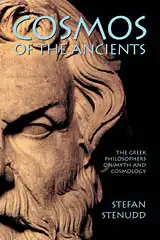 Cosmos of the Ancients
Cosmos of the Ancients
The Greek philosophers and what they thought about cosmology, myth, and the gods.
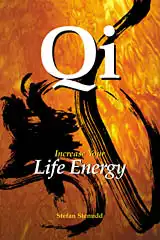 Qi — Increase Your Life Energy
Qi — Increase Your Life Energy
The life energy qi (also chi or ki) explained, with exercises on how to awaken, increase and use it.
 Aikido Principles
Aikido Principles
Basic concepts of the peaceful martial art. Aikido principles, philosophy, and fundamental ideas.
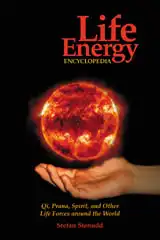 Life Energy Encyclopedia
Life Energy Encyclopedia
Qi, prana, spirit, ruach, pneuma, and many other life forces around the world explained and compared.
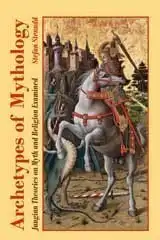 Archetypes of Mythology
Archetypes of Mythology
Jungian theories on myth and religion examined, from Carl G. Jung to Jordan B. Peterson.
 Stefan Stenudd
Stefan Stenudd
About me
I'm a Swedish author and aikido instructor. In addition to fiction, I've written books about Taoism and other East Asian traditions. I'm also an historian of ideas, researching ancient thought and mythology. Click the image to get to my personal website.Contact

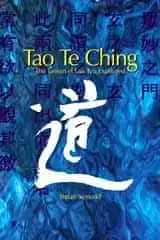 Tao Te Ching
Tao Te Ching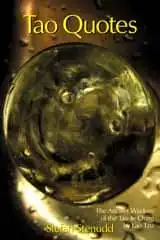 Tao Quotes
Tao Quotes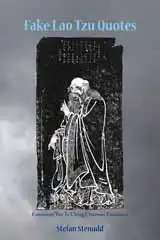 Fake Lao Tzu Quotes
Fake Lao Tzu Quotes